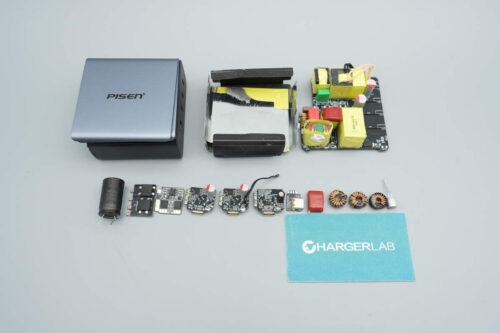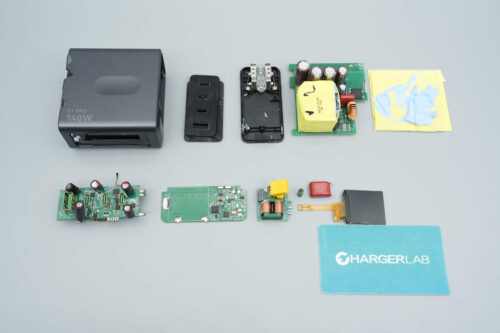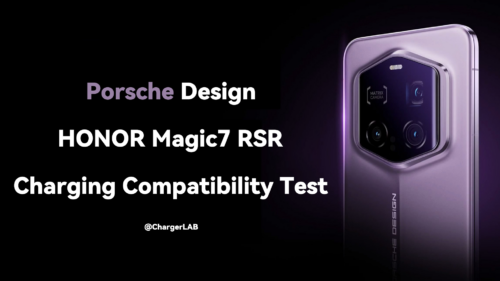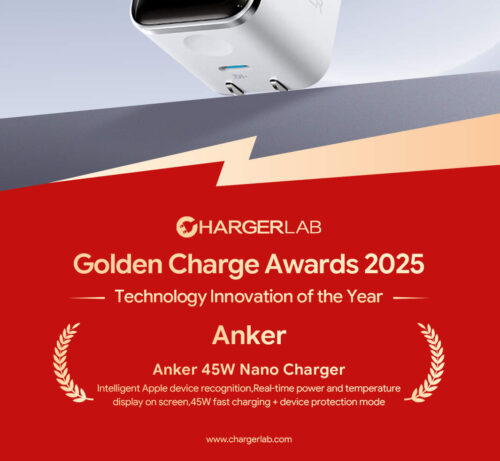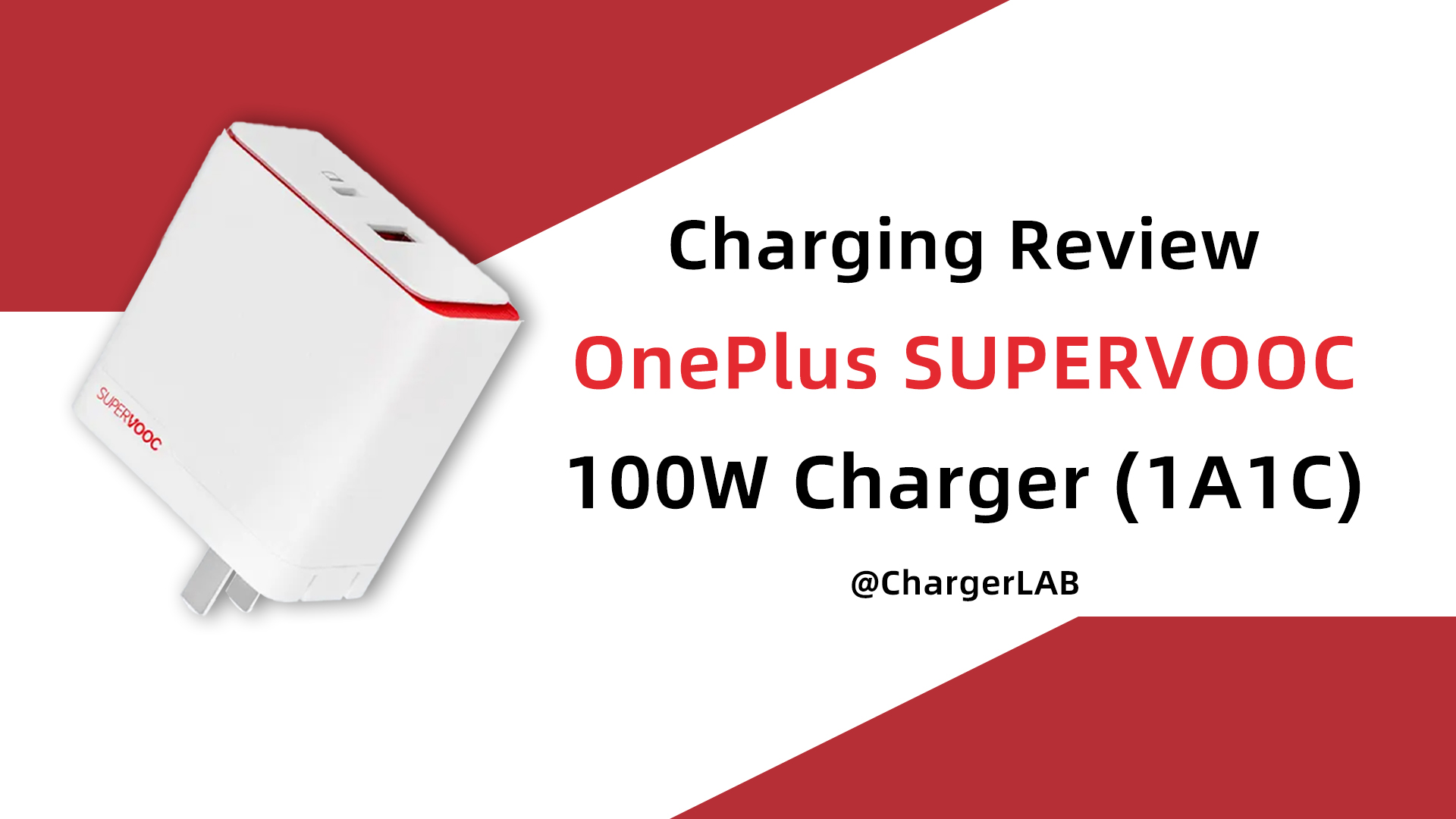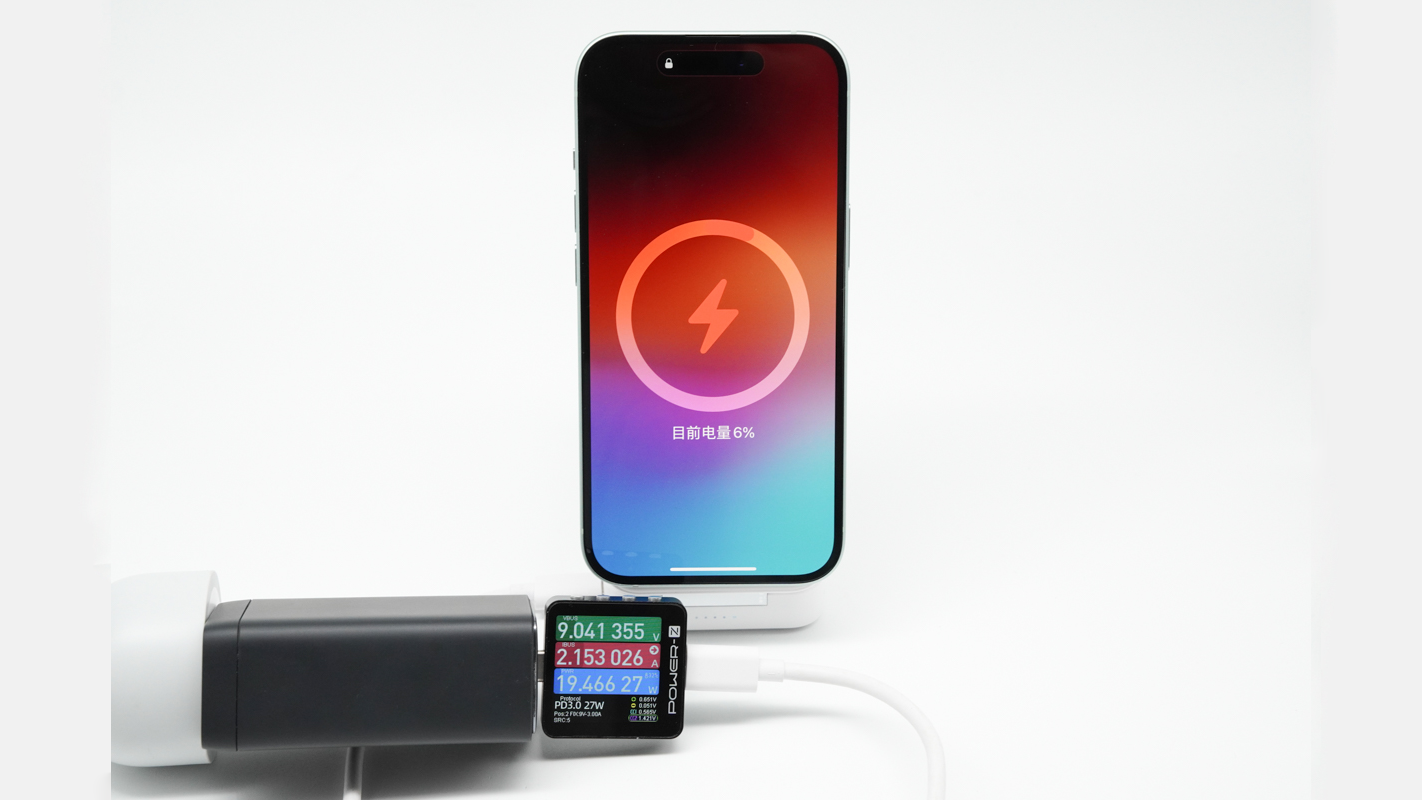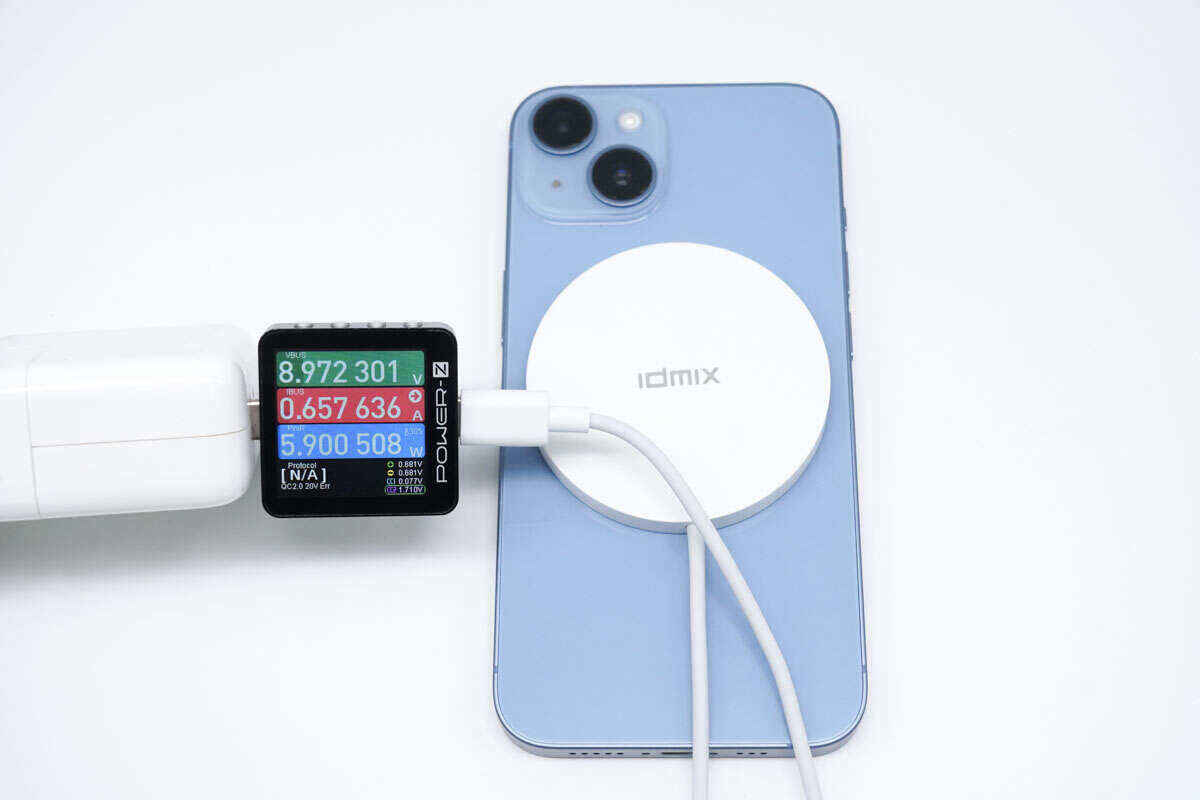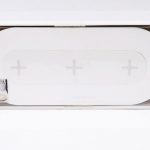Introduction
A few weeks ago, we took apart a brand new Apple 20W charger. We've taken apart this charger multiple times before. But many audiences reminded us that we never did a review video of this charger. So, today, let's review the charging performance of the new Apple 20W charger.
Product Appearance
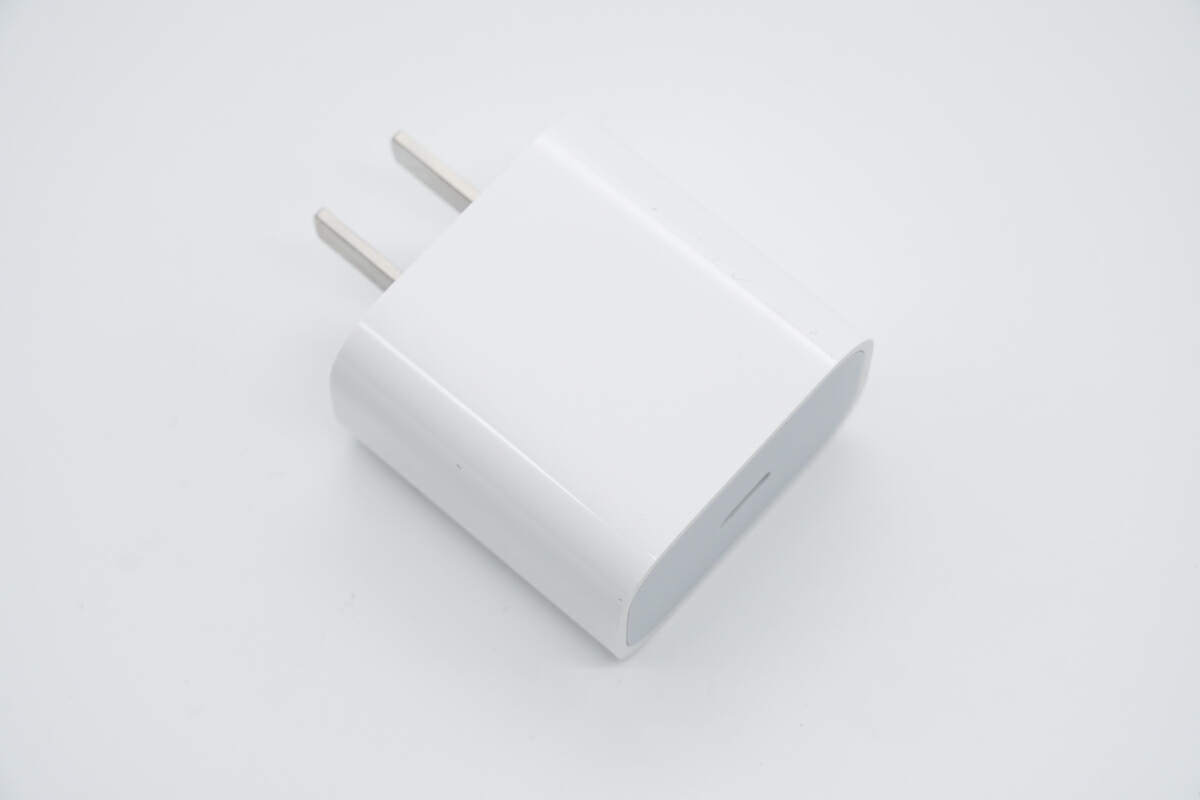
Firstly, let's briefly introduce this familiar charger. The appearance of this charger still adopts Apple's consistent design.
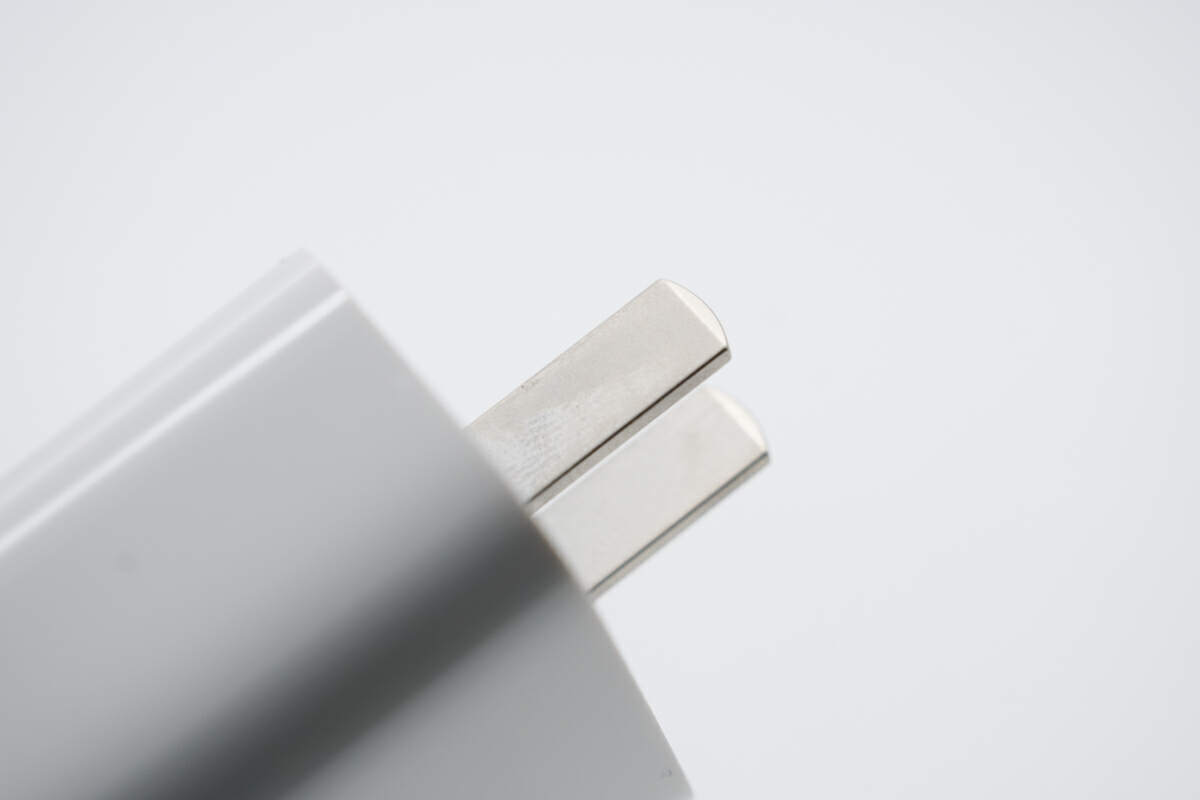
The input prongs cannot be folded.
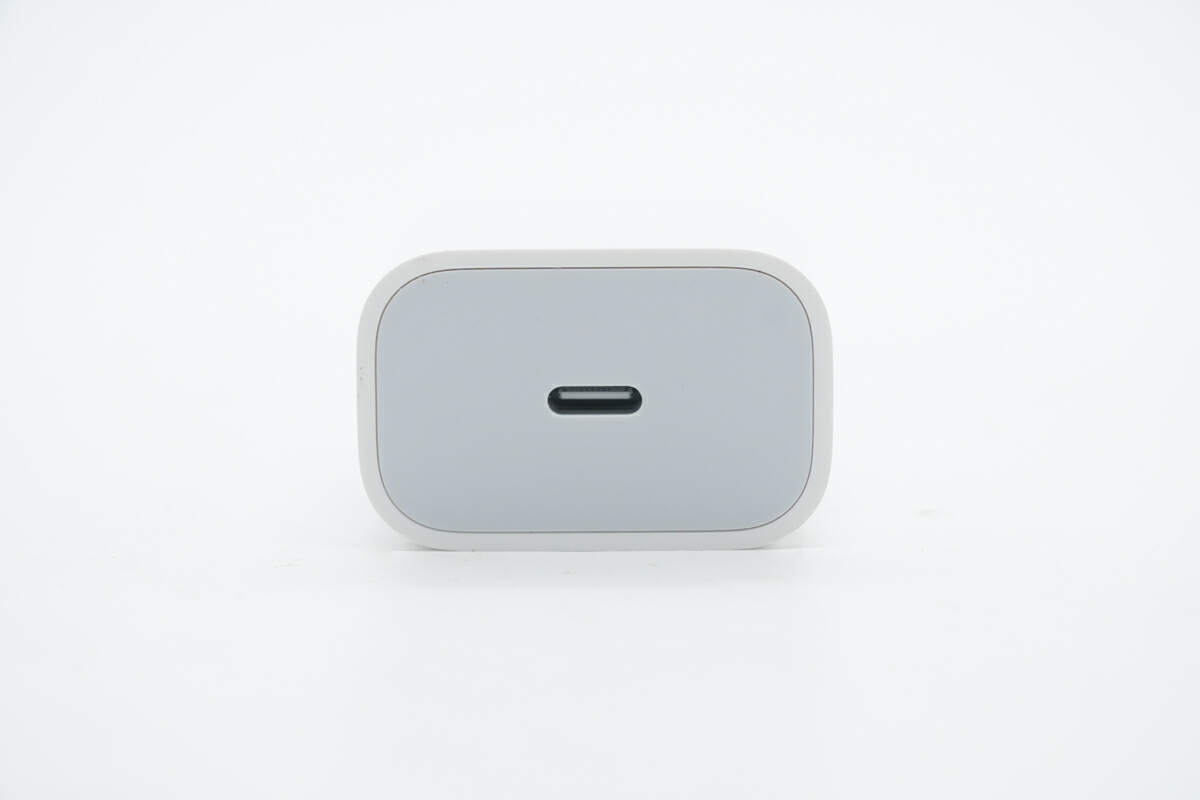
Here is the USB-C port on the top.
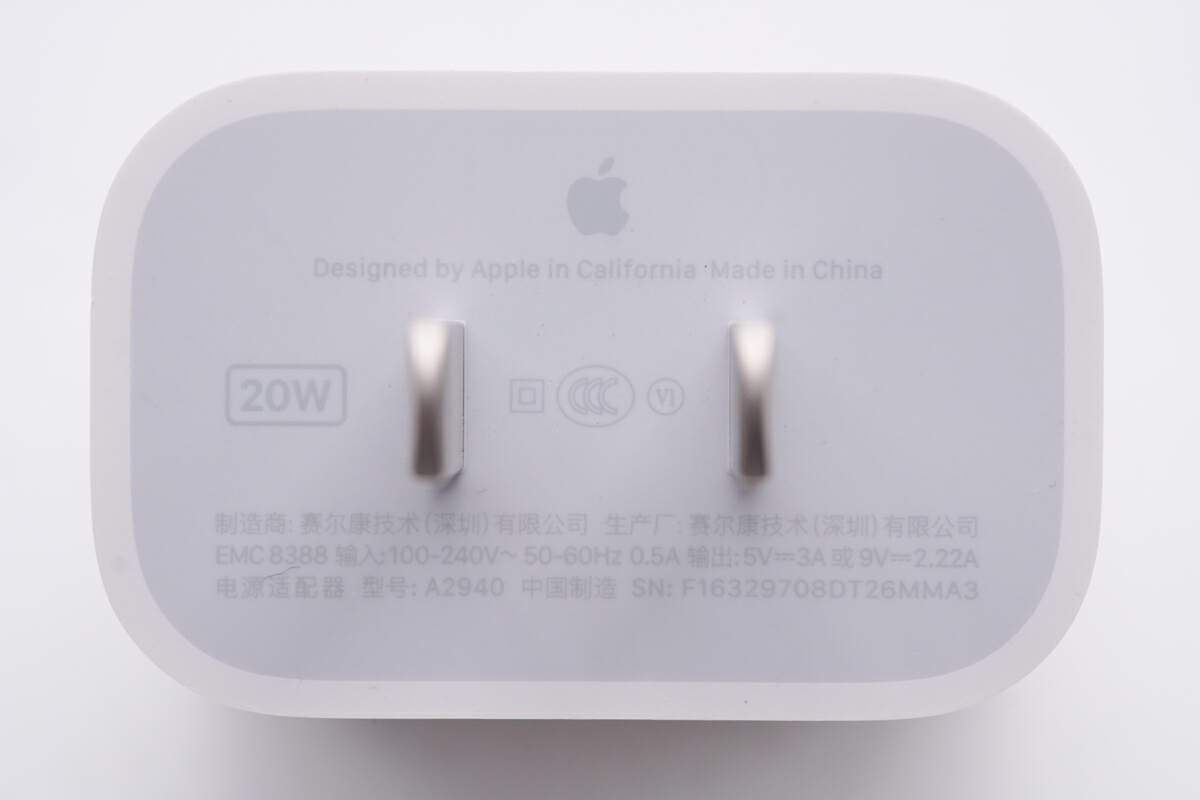
The specs info shows its model is A2940. It supports input of 100-240V~50/60Hz 0.5A. And it also supports output of 5V3A or 9V2.22A. The manufacturer is Salcomp.
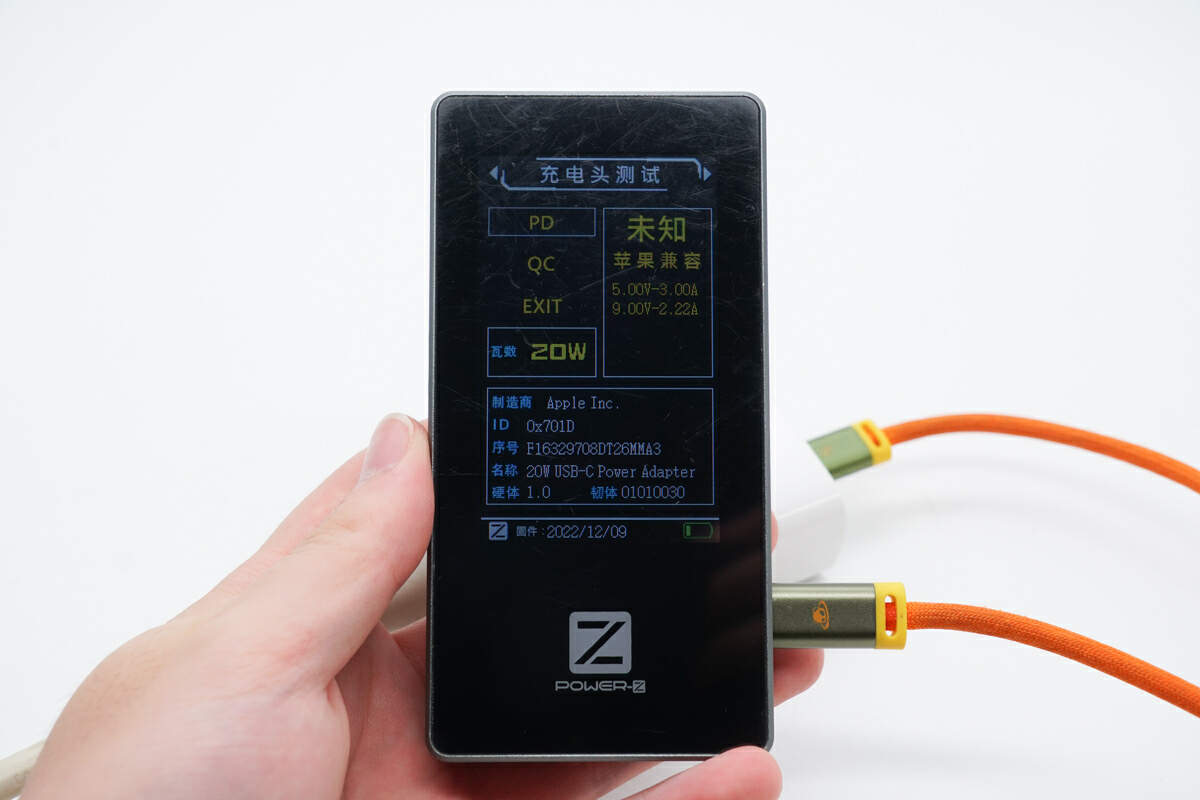
ChargerLAB POWER-Z MF001 shows the serial number of this 20W charger as F16329708DT26MMA3.
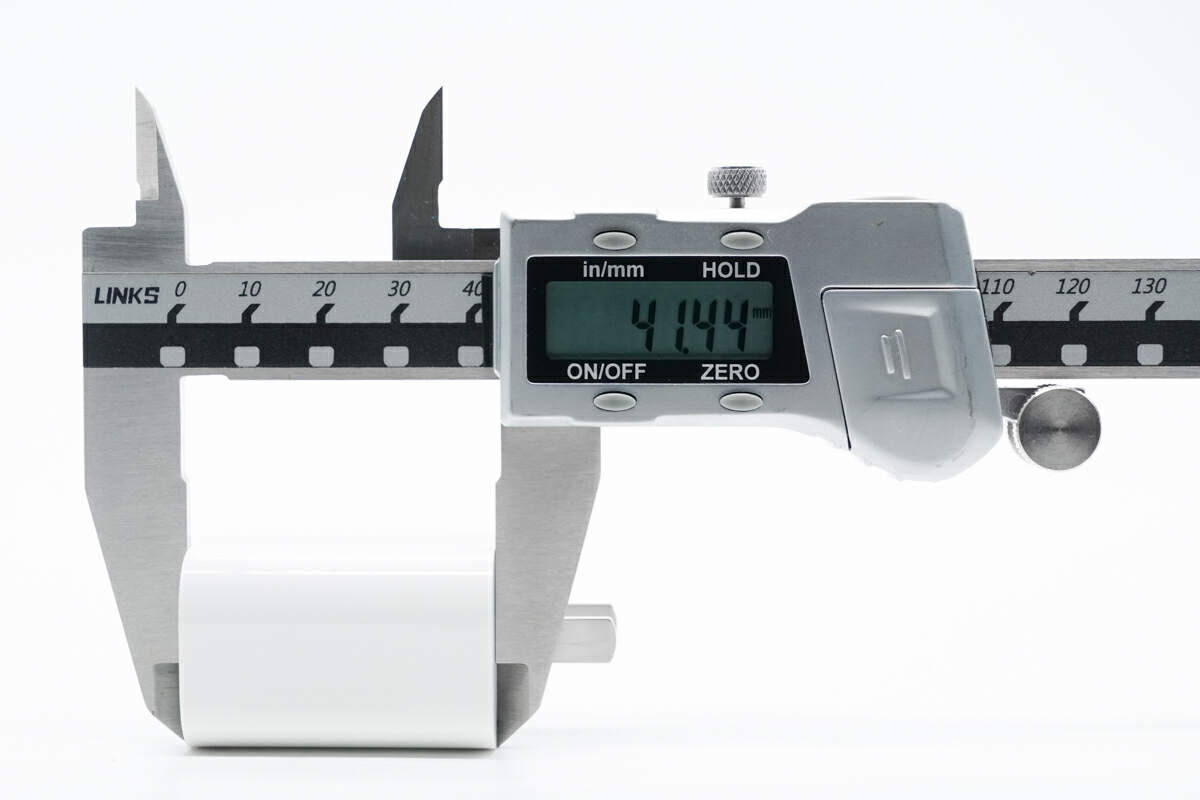
The length of the charger is about 41.5m (1.63 inches).
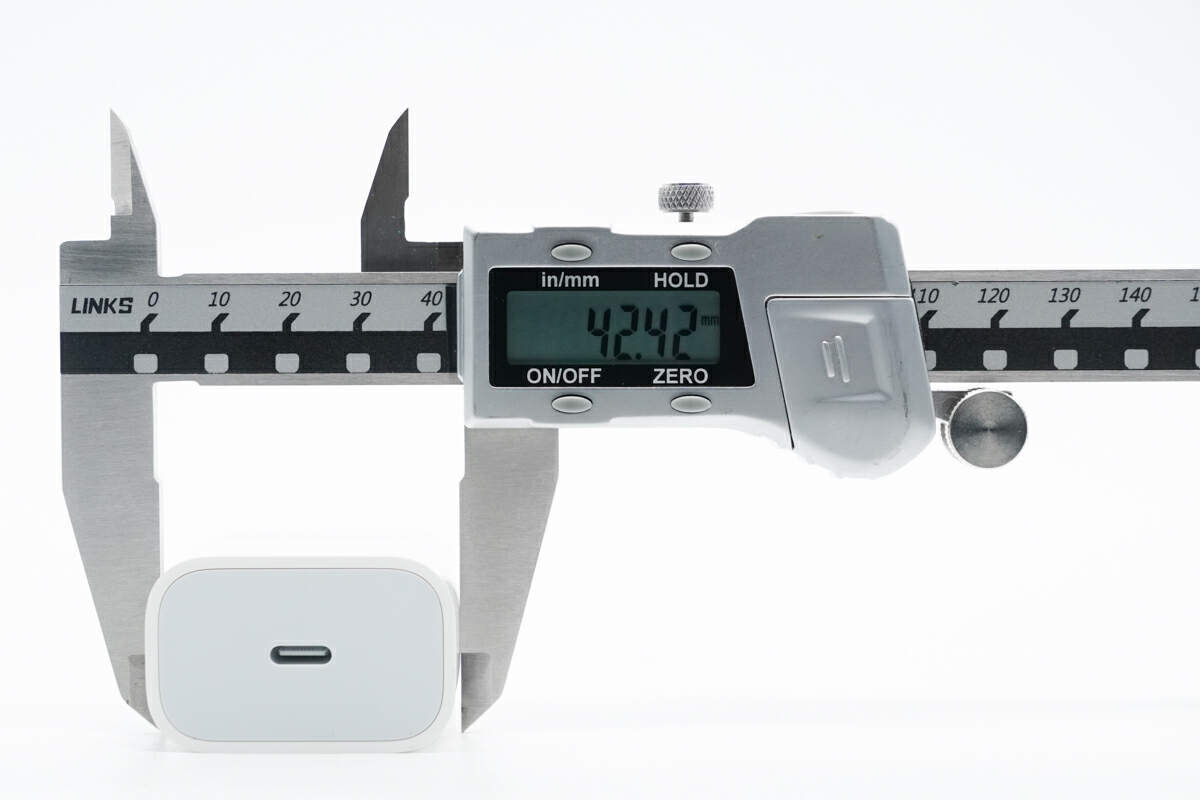
The width is about 42.5mm (1.67 inches).
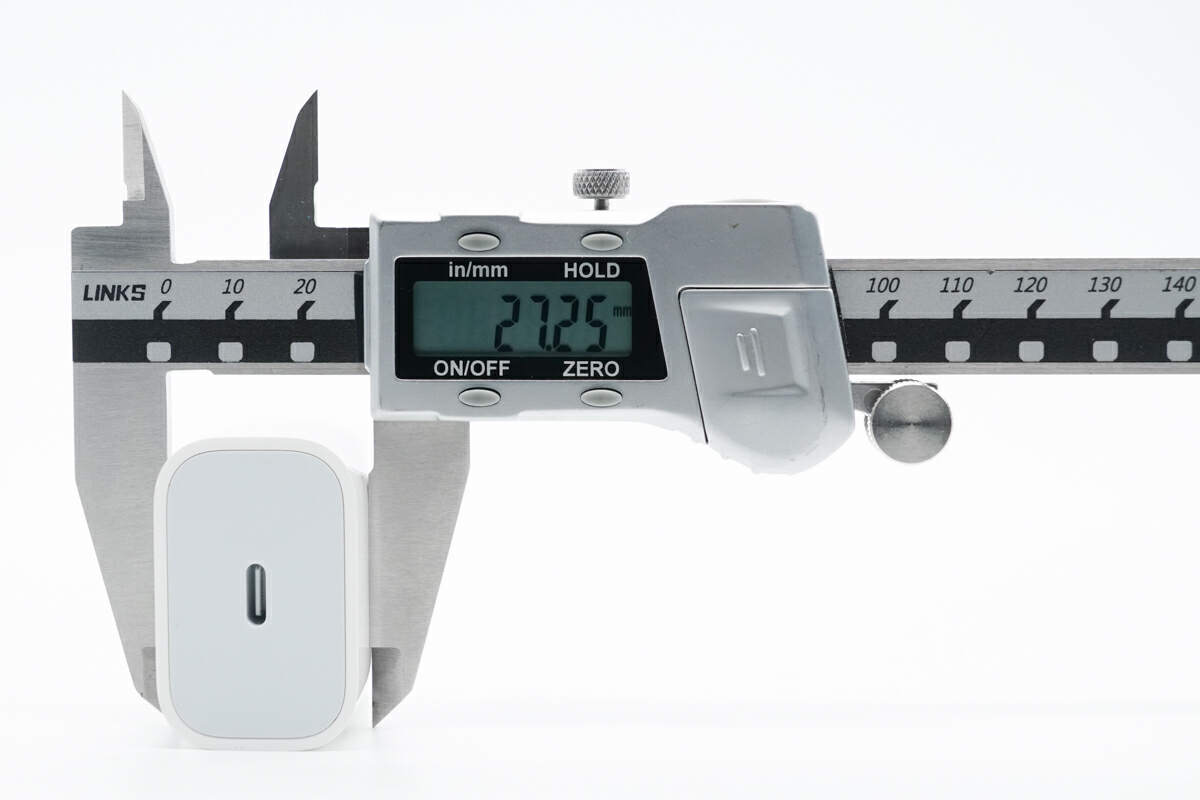
And the height is about 27mm (1.06 inches), so the power density is about 0.42W/cm³.
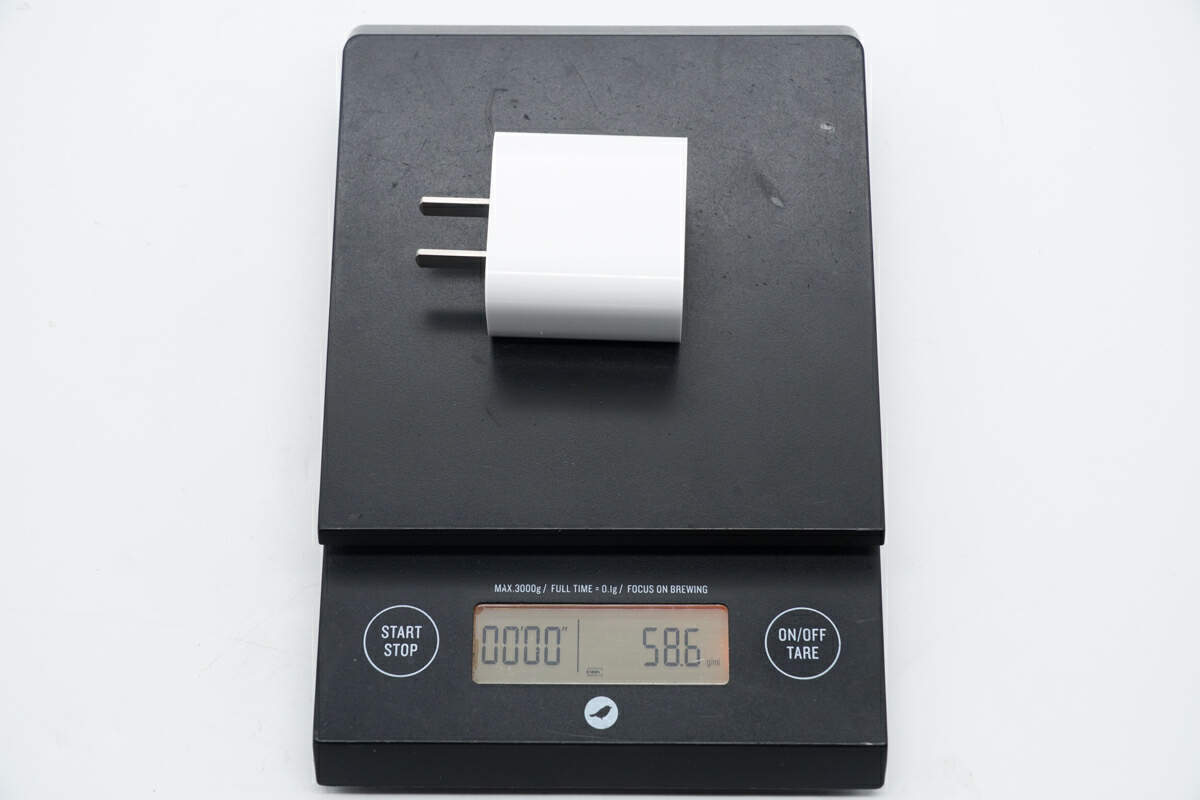
The weight of this charger is about 58.5g (2.06 oz).
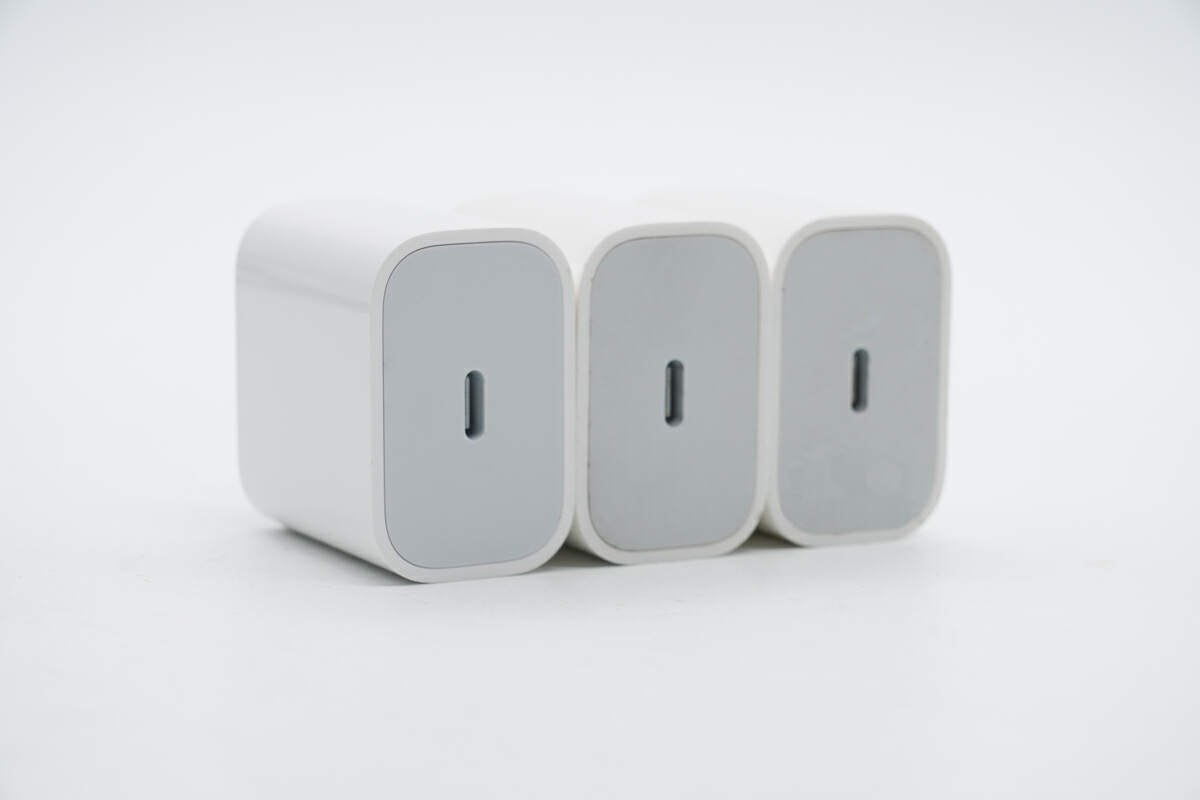
Compared to Apple's previous 20W charger (center) and 18W charger (right), it maintains a similar aesthetic appeal.
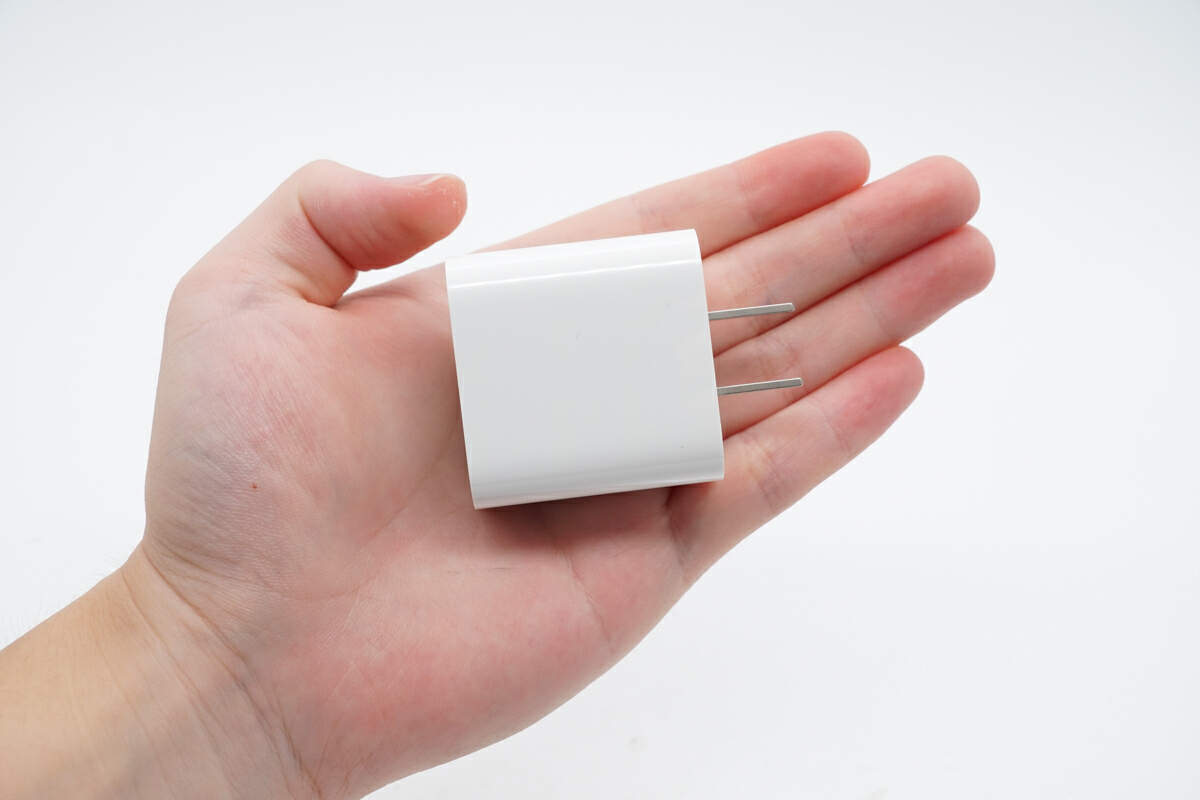
When placed in an adult male's palm, it still looks delicate and compact.
Protocol Test
The significance of our test lies in exploring the complete fast-charging protocols. This enables users to choose their devices based on specific protocols, ultimately achieving a better fast-charging experience.
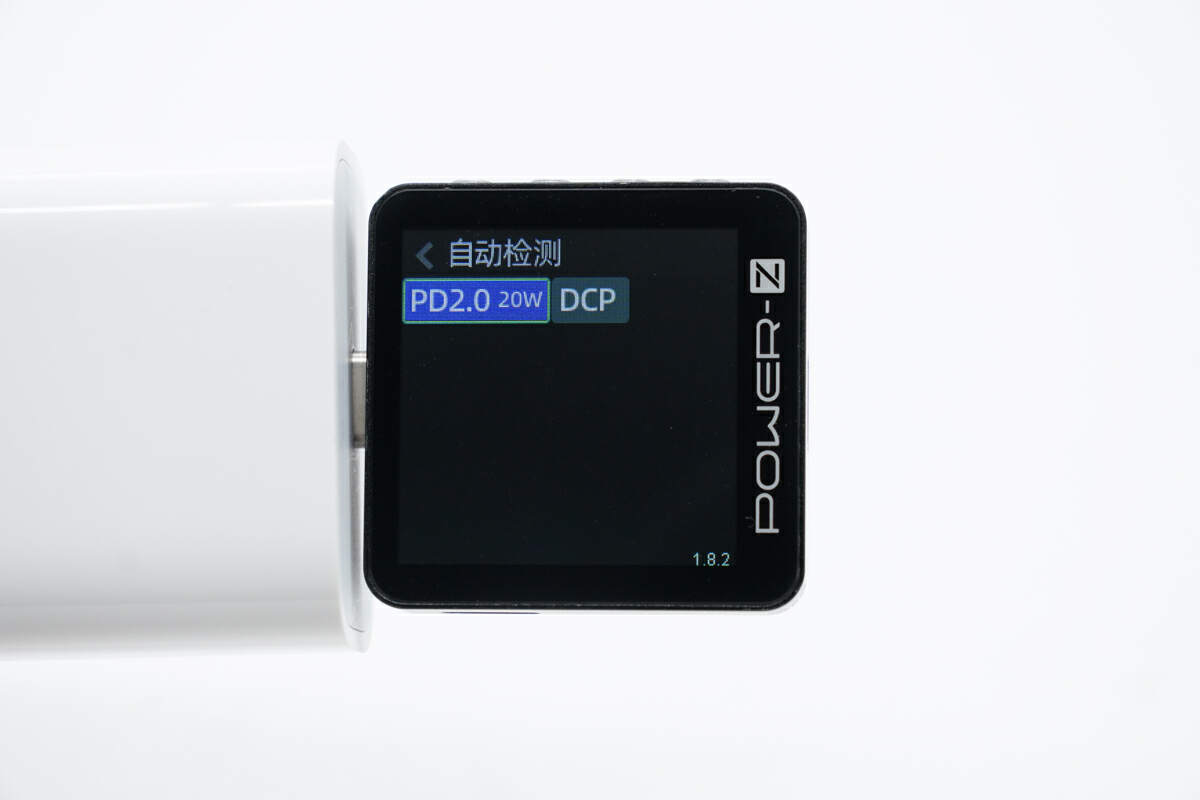
The ChargerLAB POWER-Z KM003C shows it only supports PD2.0 and DCP charging protocols.
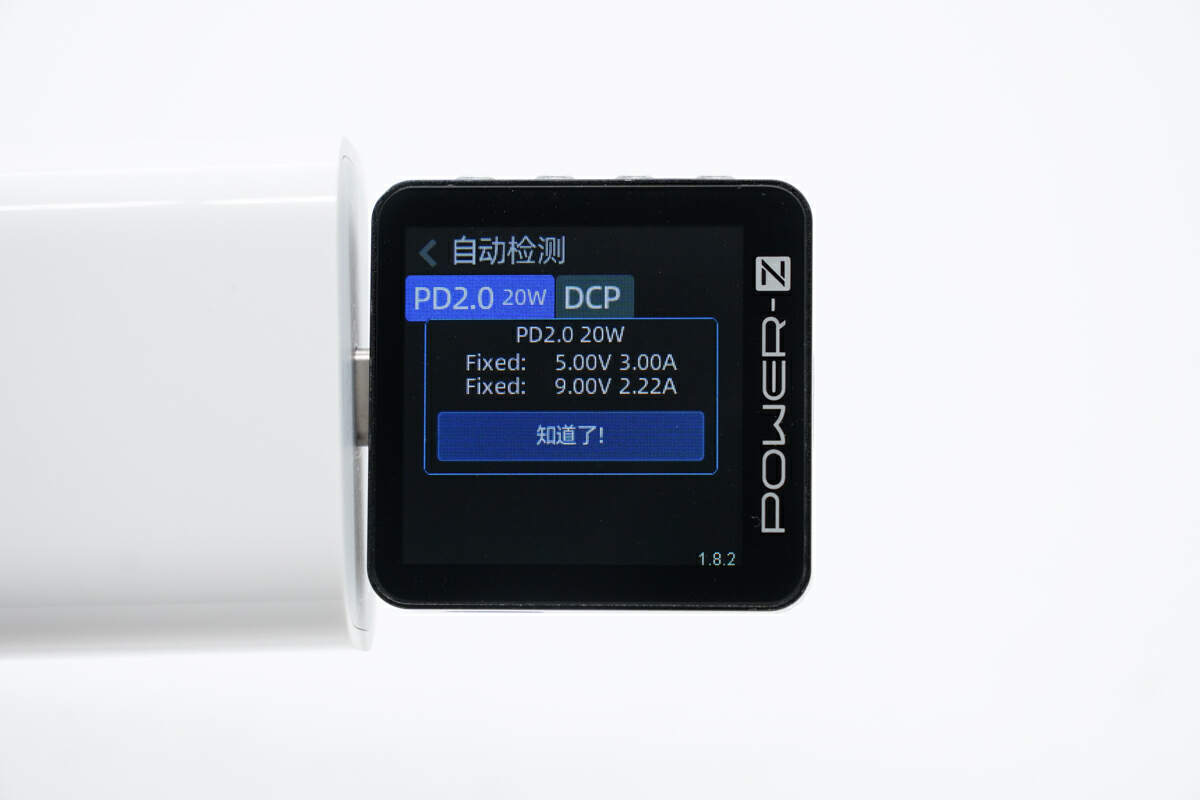
And it also supports two fixed PDOs of 5V3A and 9V2.22A.
Charging Test
Compatibility Test
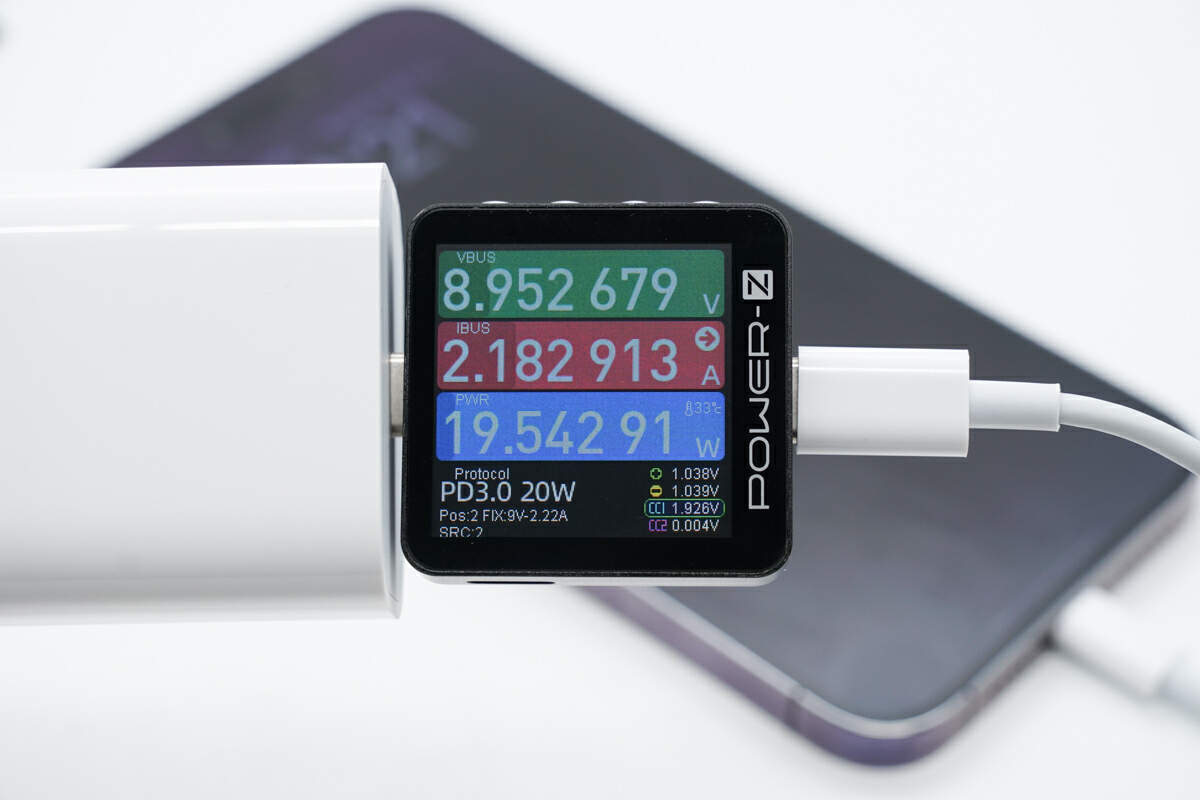
Then, let's try to charge it with iPhone, Android phones, and other laptops. Firstly, it can provide 20W to the iPhone 14 Pro Max.
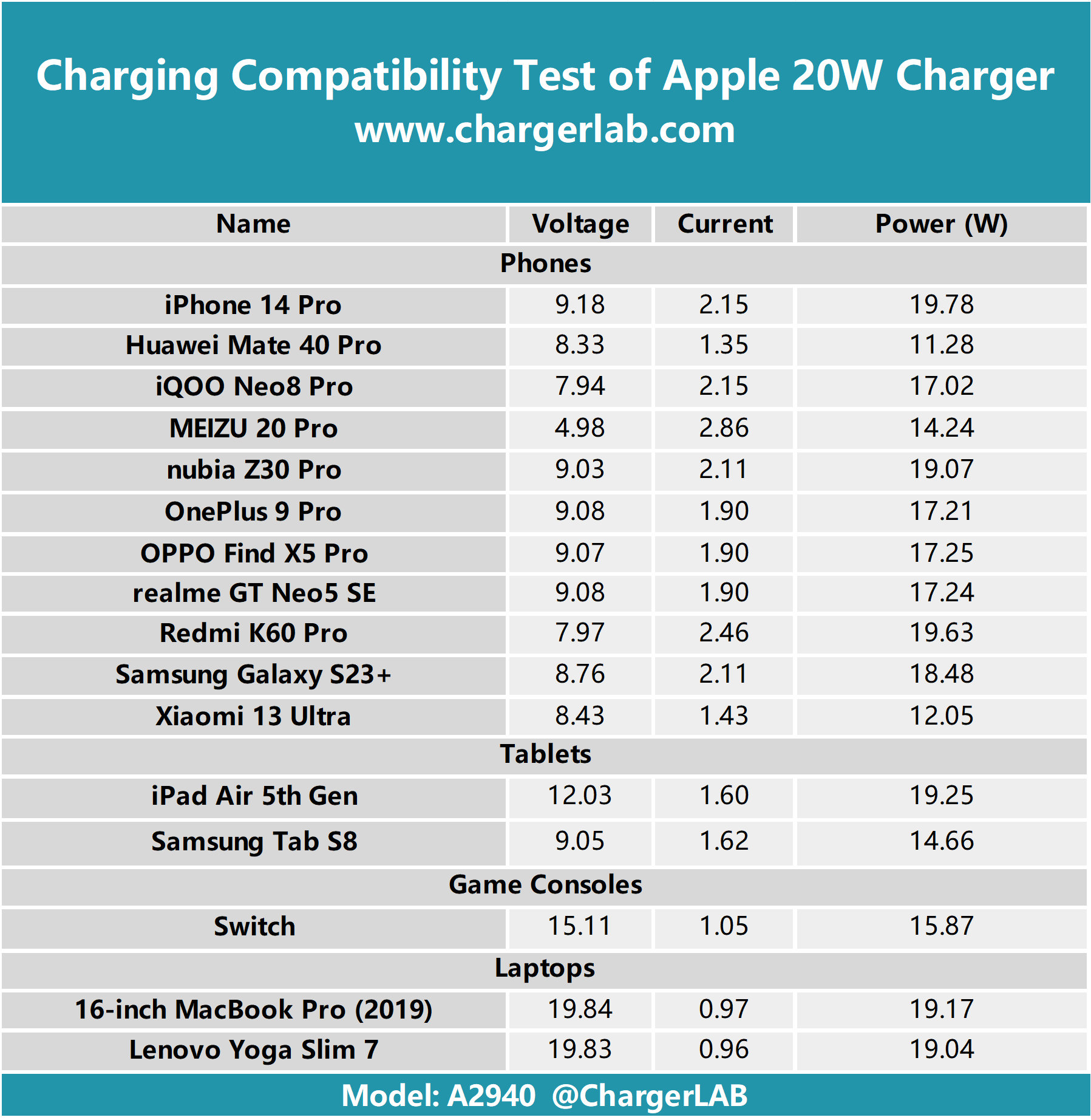
Through testing with multiple devices, it has been determined that the Apple 20W charger can support a 9V voltage level, delivering a maximum output power of 19.78W.
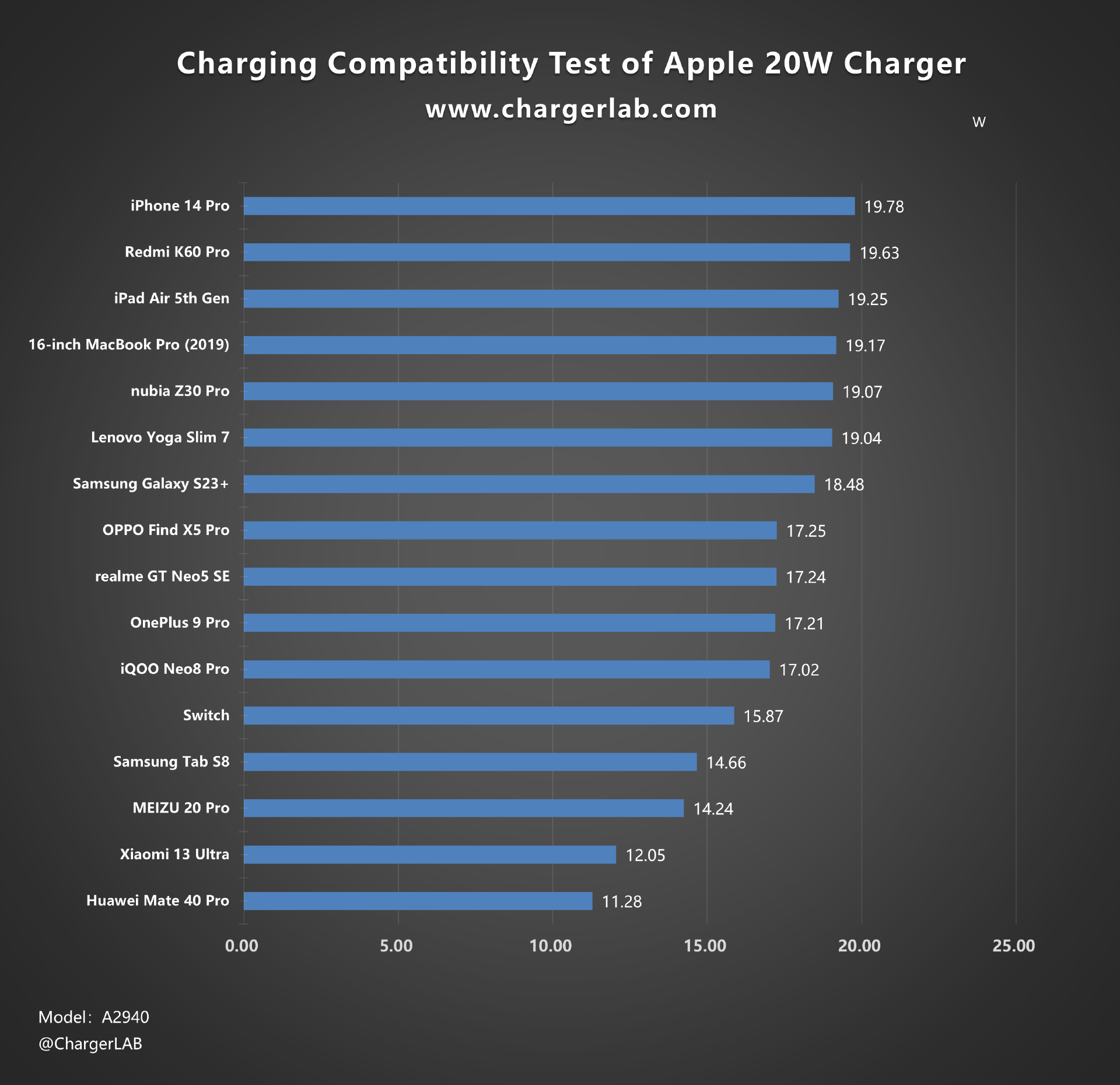
And it has the best compatibility with Apple devices, since its output power is not that high, most devices can reach more than 17W. Only a few devices can reach about 10W.
Full Charging Test
Next, we'll use it to fully charge the iPhone 14 Plus.
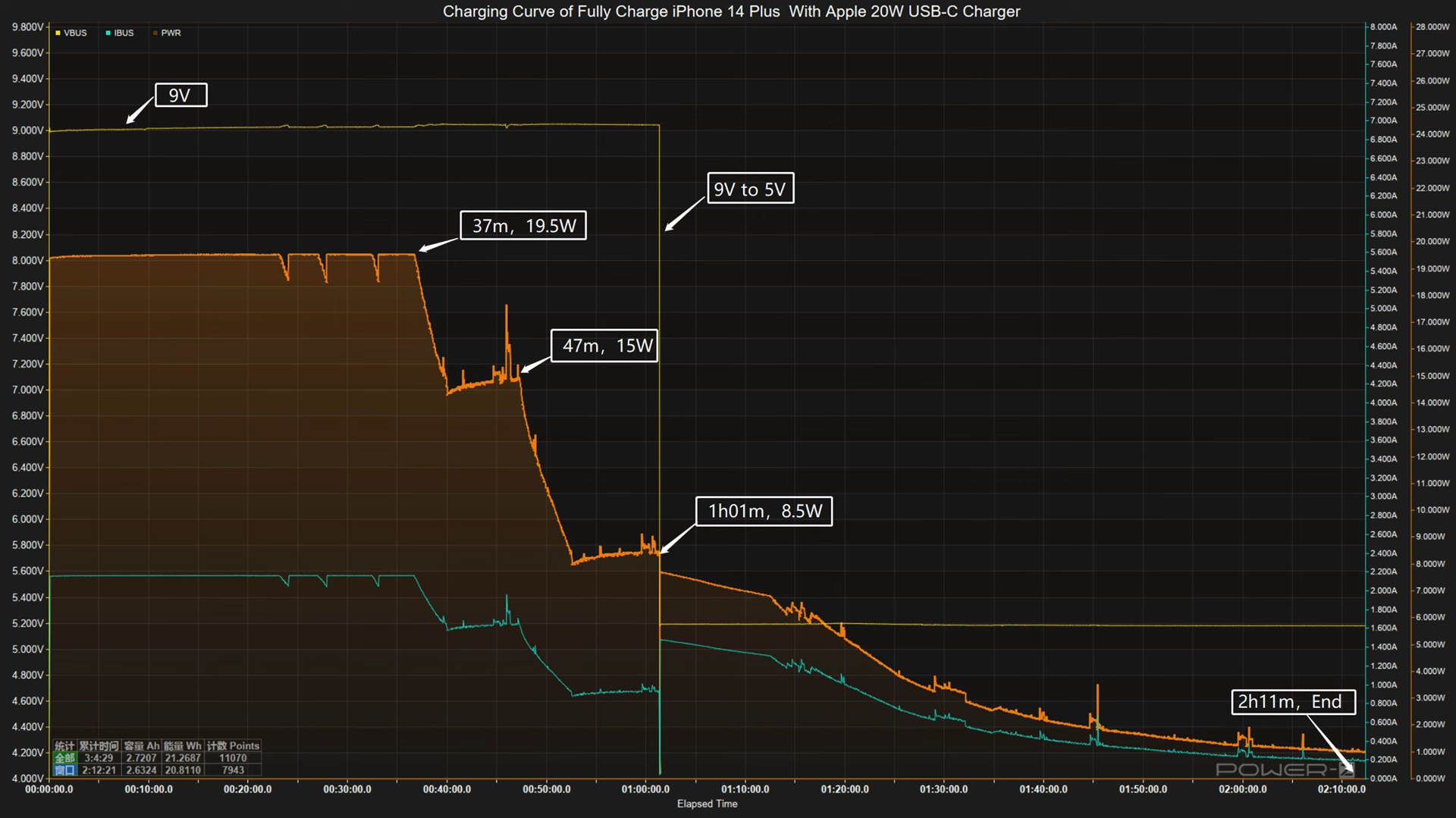
The charging curve can be divided into four parts. In the first part, the power is pretty stable at around 19.5W. After 37 mins, the power gradually drops to 15W, 8.5W. The final part begins at one hour, and the voltage also drops from 9V to 5V. It takes another hour to drop to almost zero. The total charging time is about two hours and 11 mins.
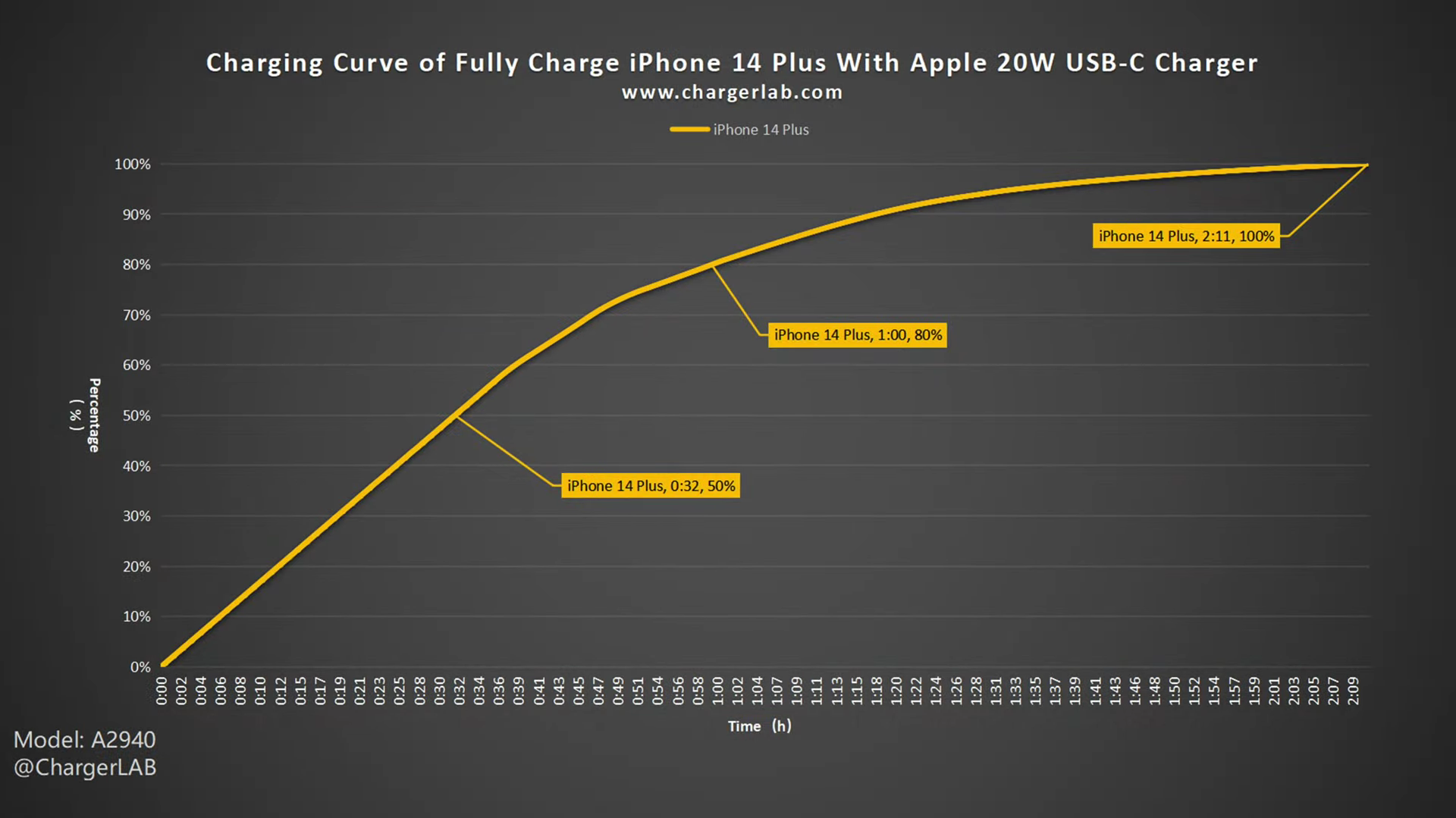
We also turn it into another curve. The charger can charge the iPhone 14 Plus to 50% in 32 mins. And it can reach 80% in an hour, 100% in two hours and 11 mins.
The charging time is basically the same as the old Apple 20W we tested before.
Standby Power Test
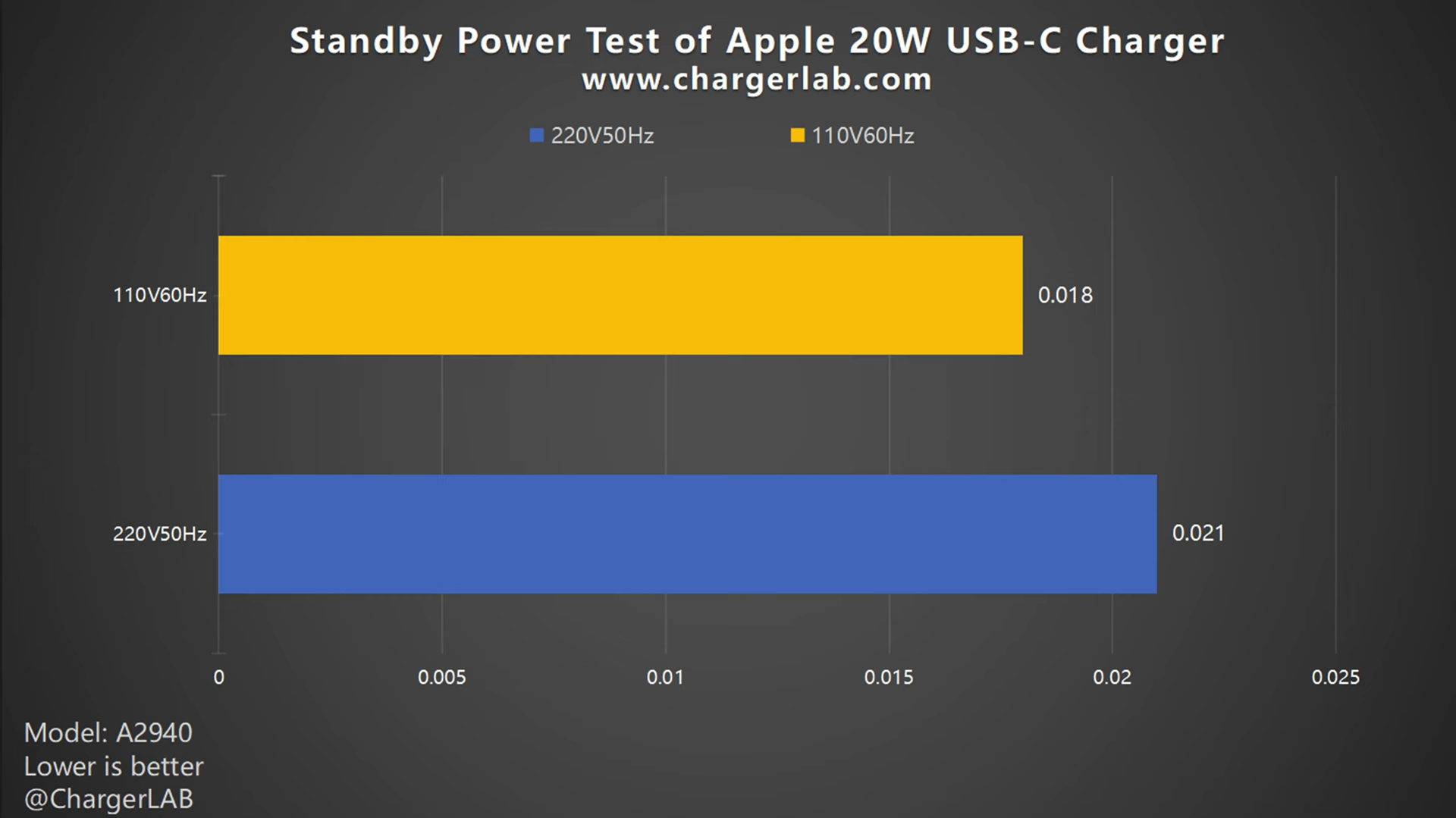
As for the standby power part. The power consumption at 220V 50Hz is 0.021W, and 0.018W at 110V 60Hz, which is about 0.184 and 0.158KW·h in one year, respectively. The result is extremely impressive, almost 0. You won't feel an increase in your electricity bill at all.
Conversion Efficiency Test
Chargers are fundamentally devices that engage in energy conversion, which can lead to some degree of power loss in the form of heat. As a result, the actual power draw from the outlet may be somewhat higher than the rated power specified on the adapter. We conducted test on this Apple charger to assess its conversion efficiency under two different AC input voltages: 220V 50Hz and 110V 60Hz. The following chart outlines our test results.
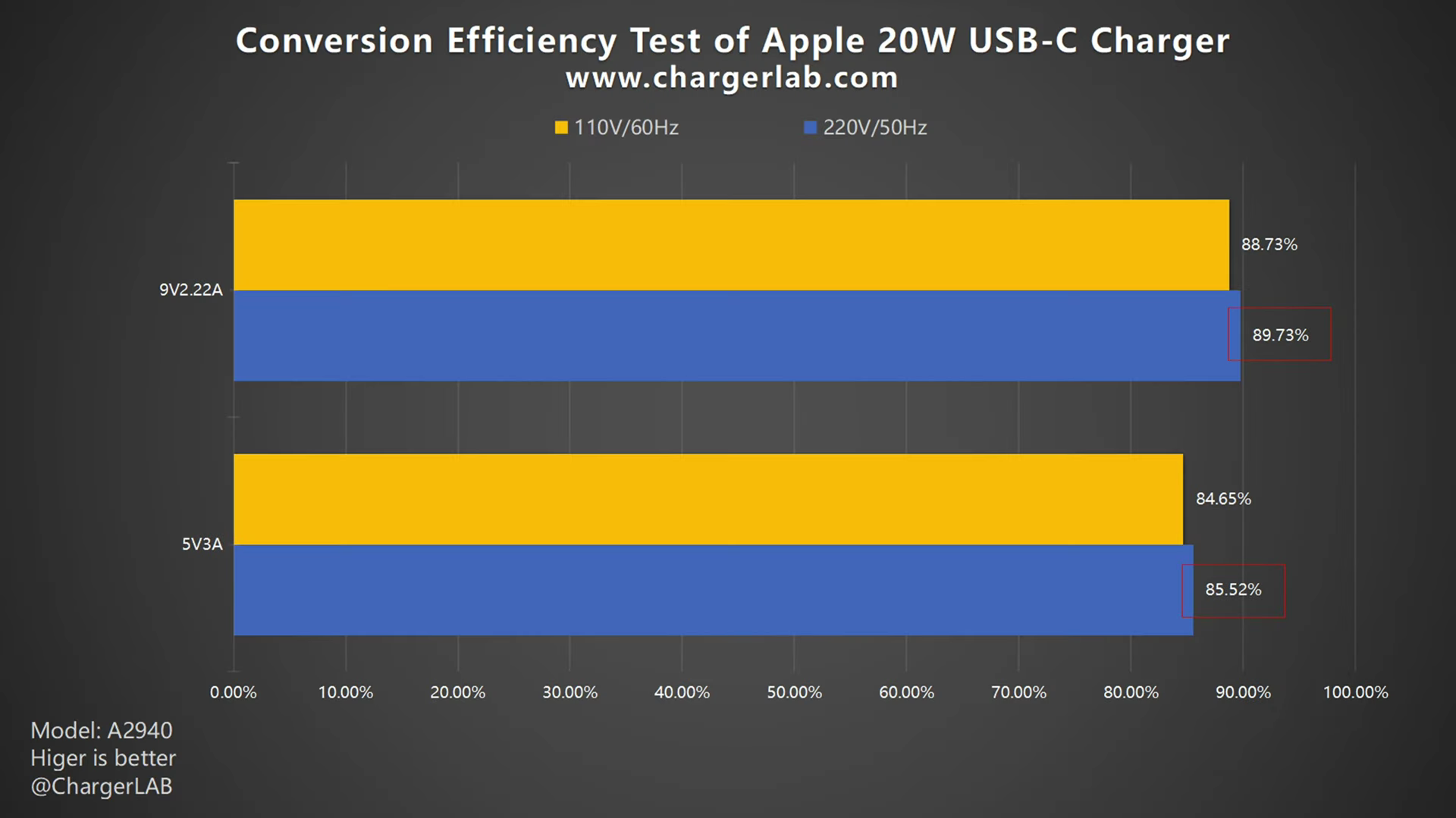
The conversion efficiency varies from 85.52% to 89.73% at 220V 50Hz. The conversion efficiency varies from 84.65% to 88.73% at 110V 60Hz.
The conversion efficiency reaches the average among all chargers we tested.
Ripple Test
Chargers often rely on switch-mode power supplies, which means that the output from the transformer's secondary winding is not direct current and must be rectified and filtered by capacitors before being outputted. As a result, ripples can exist in the output signal. To evaluate the quality of the output, ChargerLAB employs an oscilloscope to test the ripple value of the charger's output. In general, the lower the ripple, the higher the output quality.
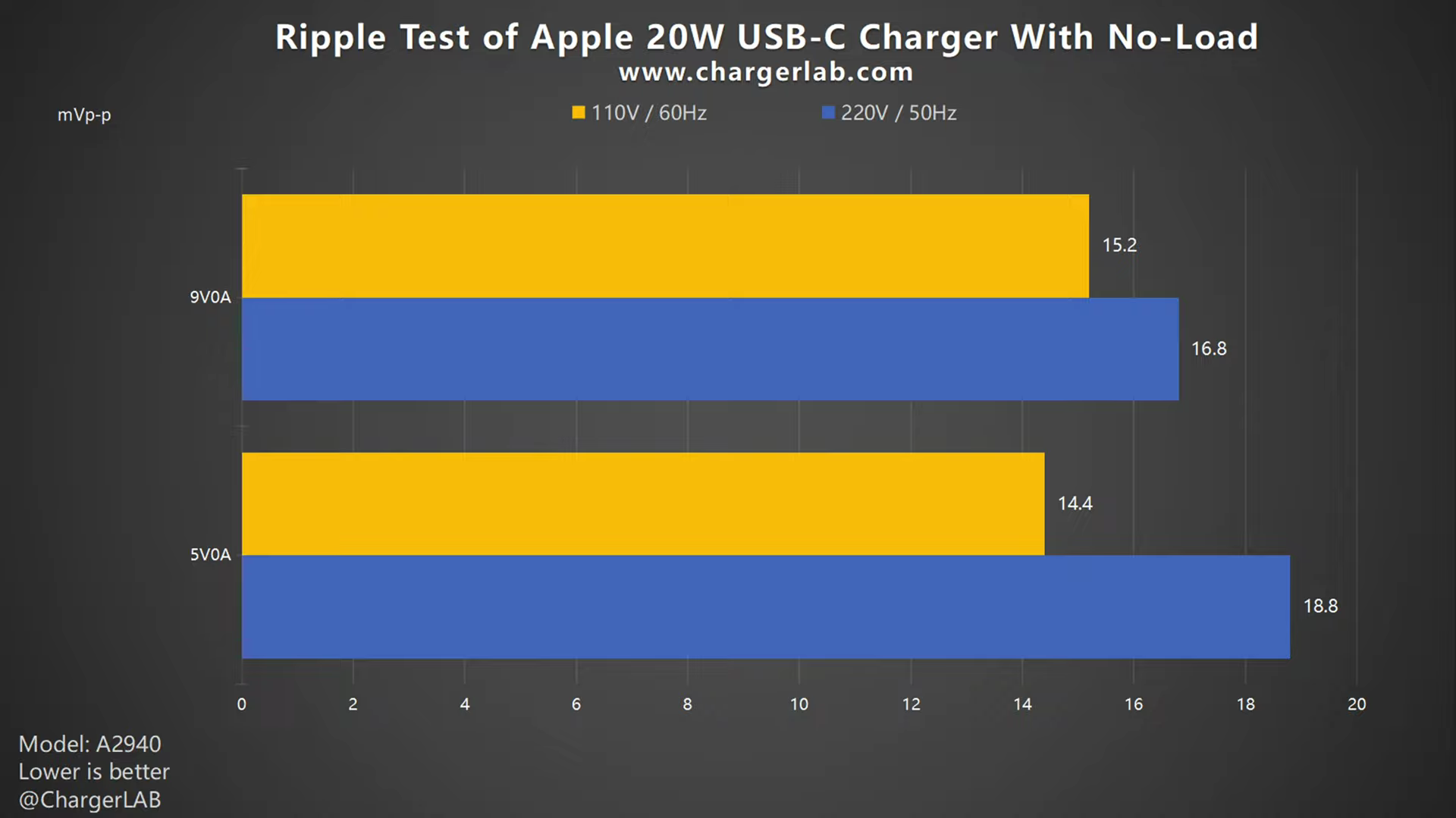
Firstly, let’s check out its ripple without load. The overall ripple is very stable at different voltages, maintaining at 15-18 mVp-p.
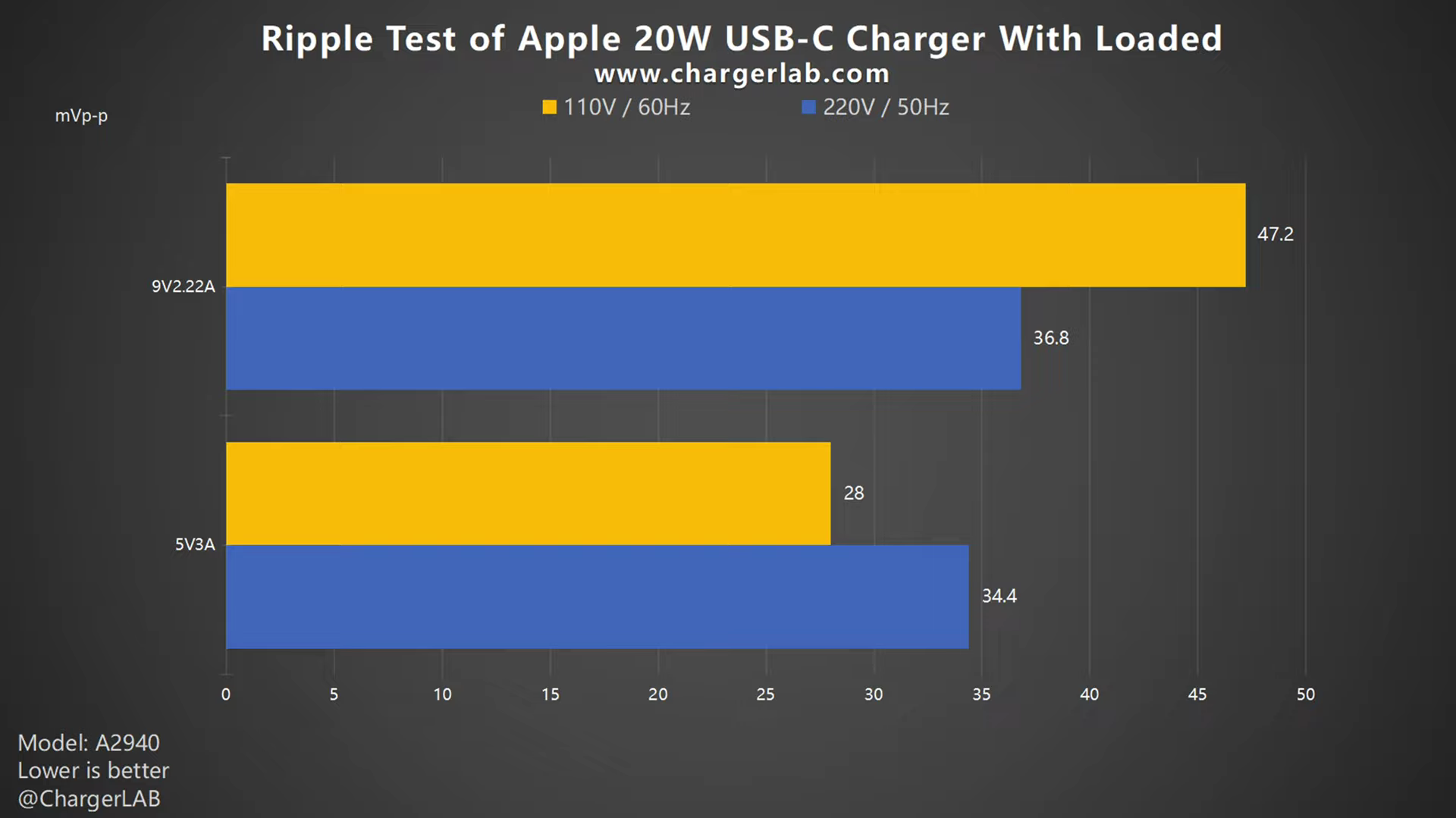
Then, move to the ripple test when loaded. The overall ripples are higher than without load. When the output is 9V 2.22A, the highest ripple is 47.2 and 36.8 mVp-p, respectively. When the output is 5V 3A, the lowest ripple is 28 and 34.4 mVp-p, respectively. It follows the low ripple feature, just like the Apple 5W charger.
Temperature Test
We also put the charger into a 25°C (77℉) thermotank throughout the test. After an hour of 20W output, we got the maximum temperature.
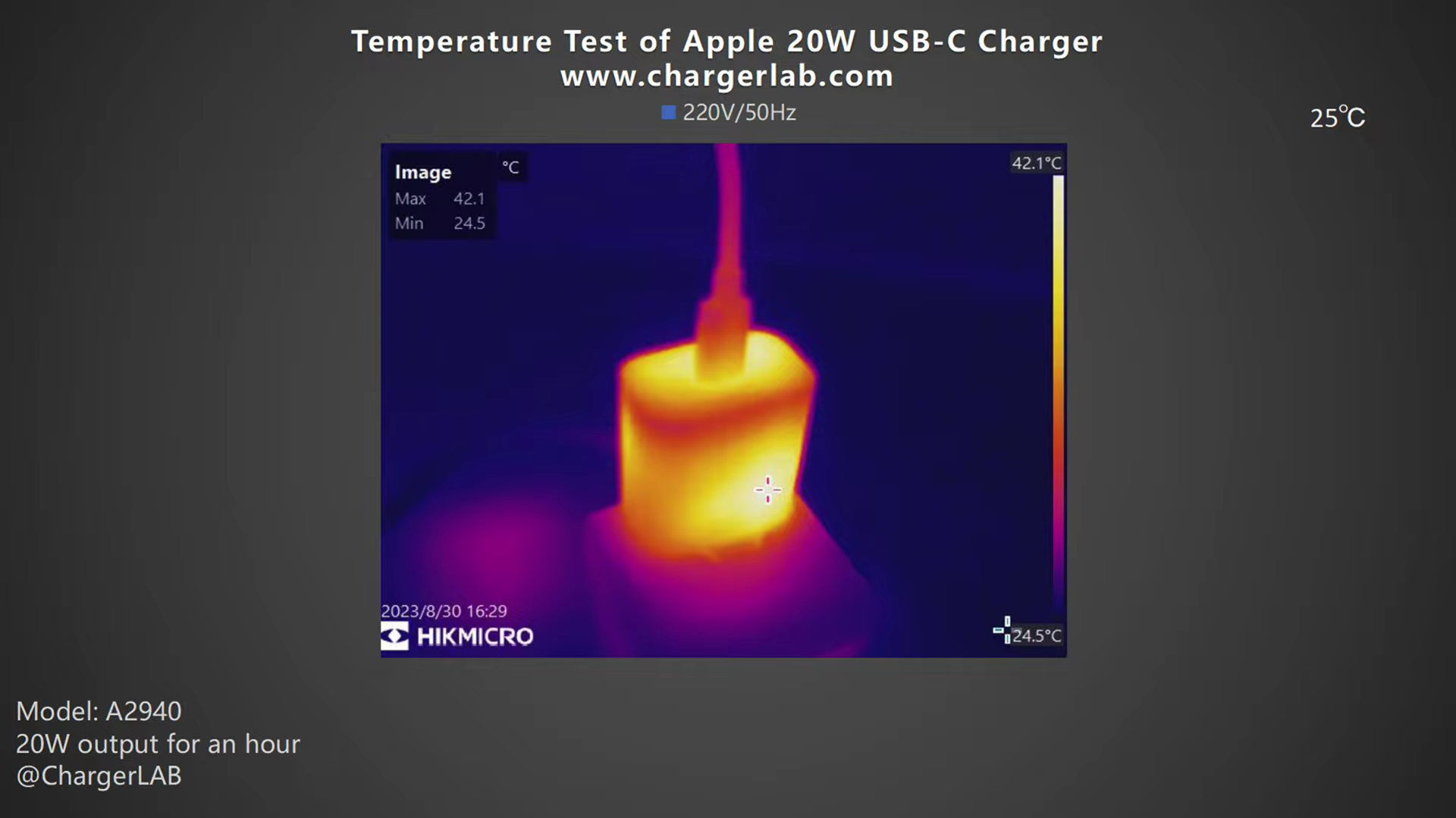
Under 220V 50Hz, the front is 42.1°C (107.78℉).
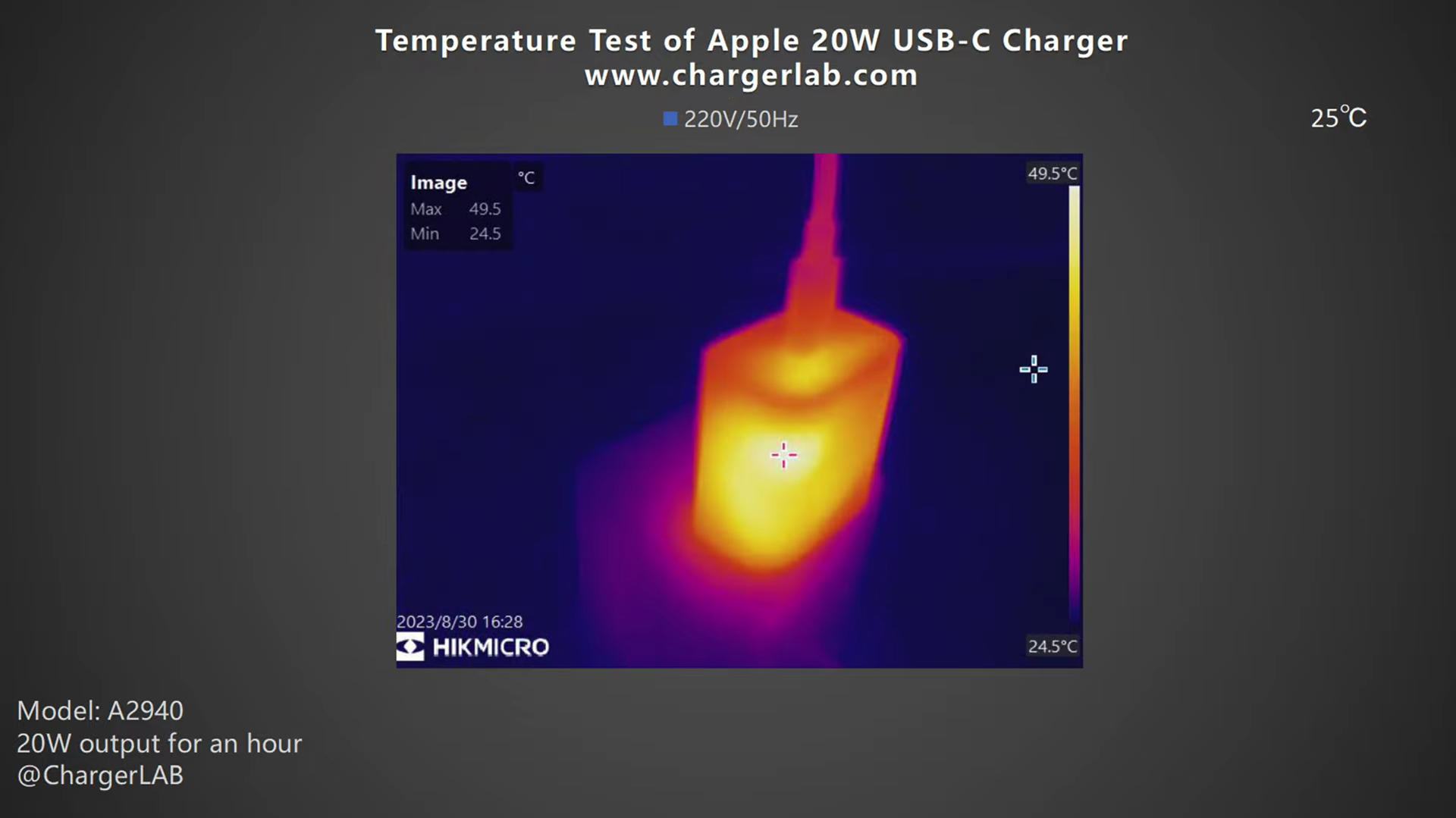
And the back is 49.5°C (121.1 ℉).
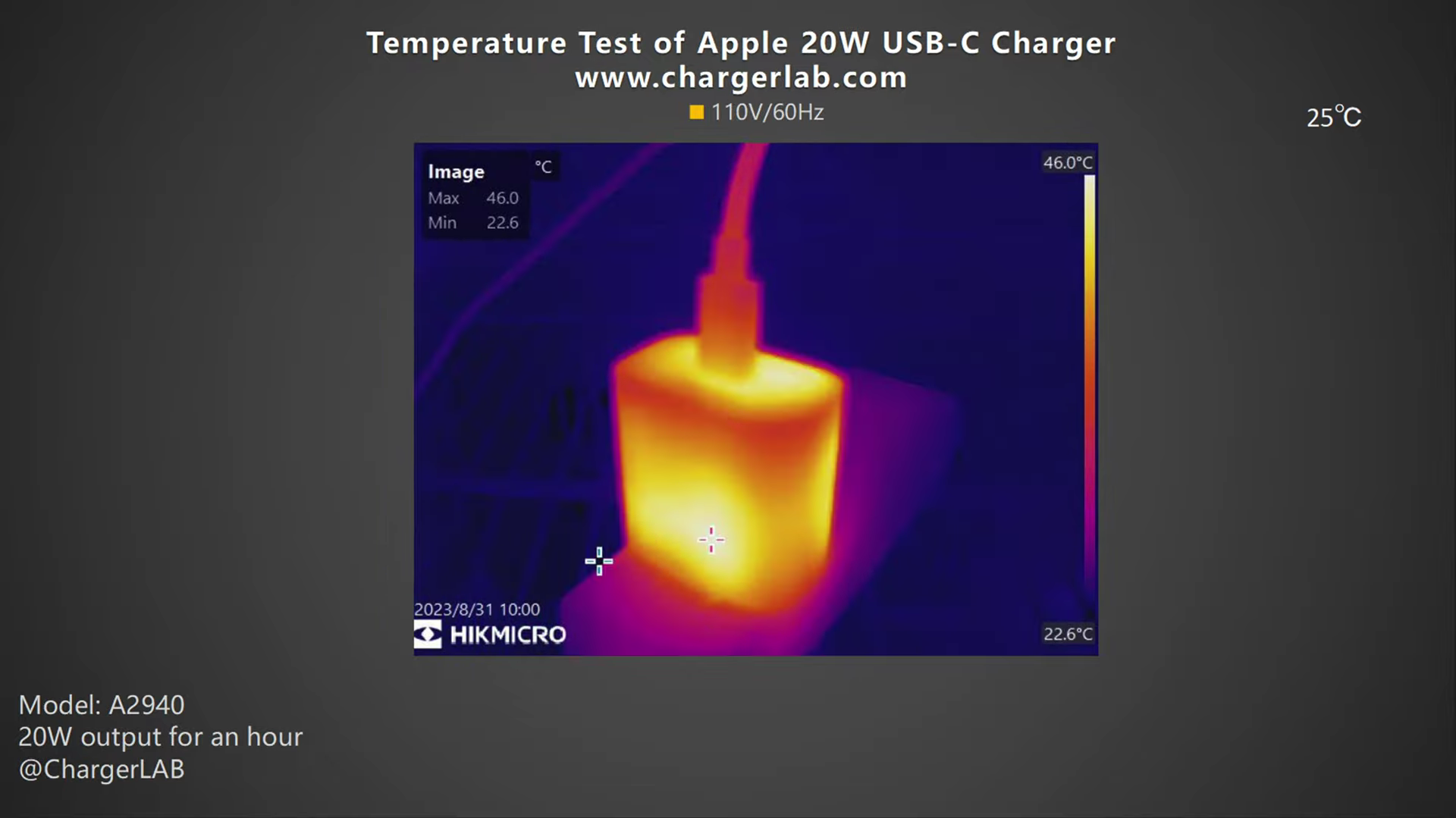
Moving on to the 110V 60Hz. The maximum temperature on the front is 46°C (114.8℉).
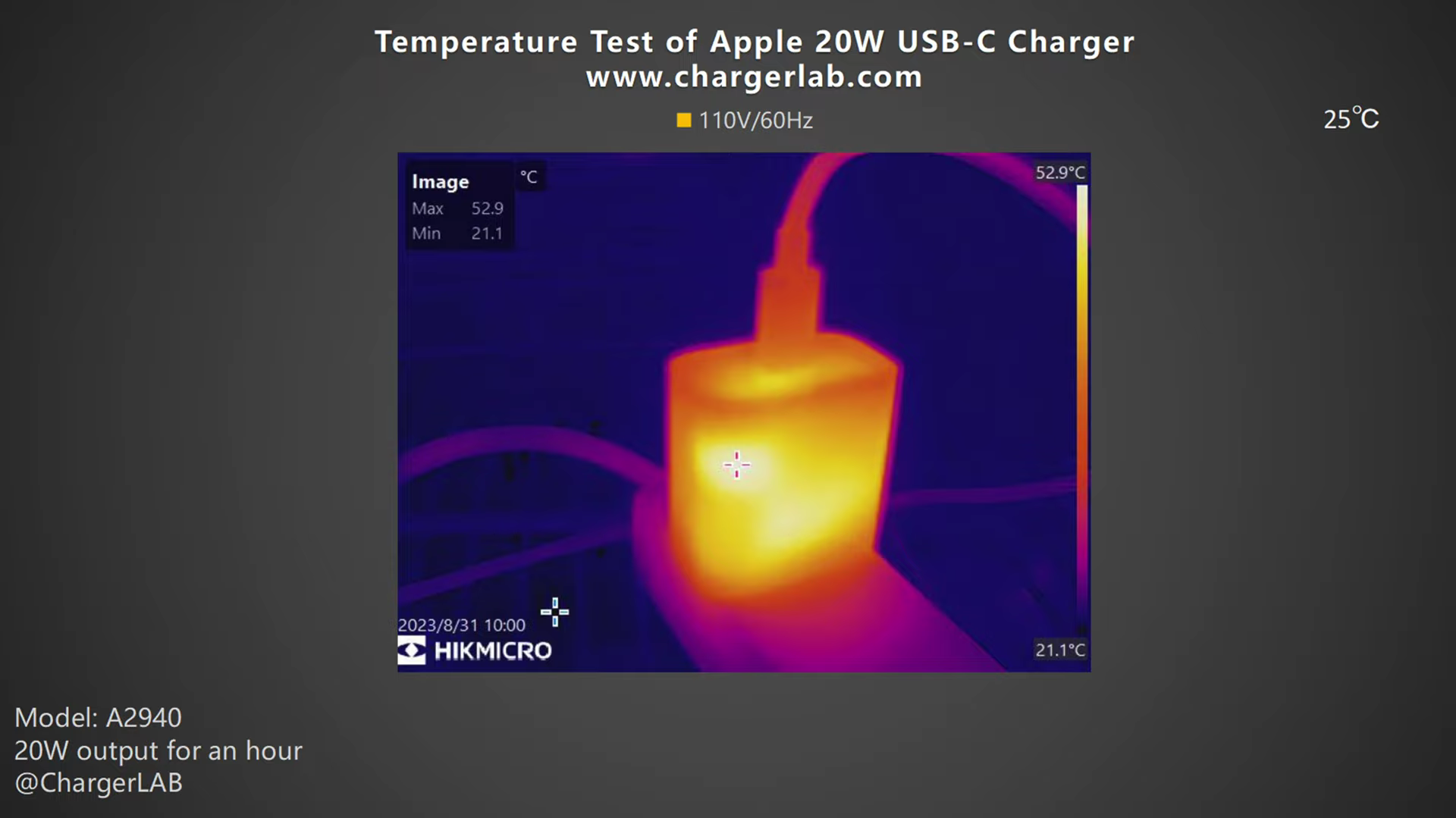
And the maximum temperature on the back is 52.9°C (127.22℉).
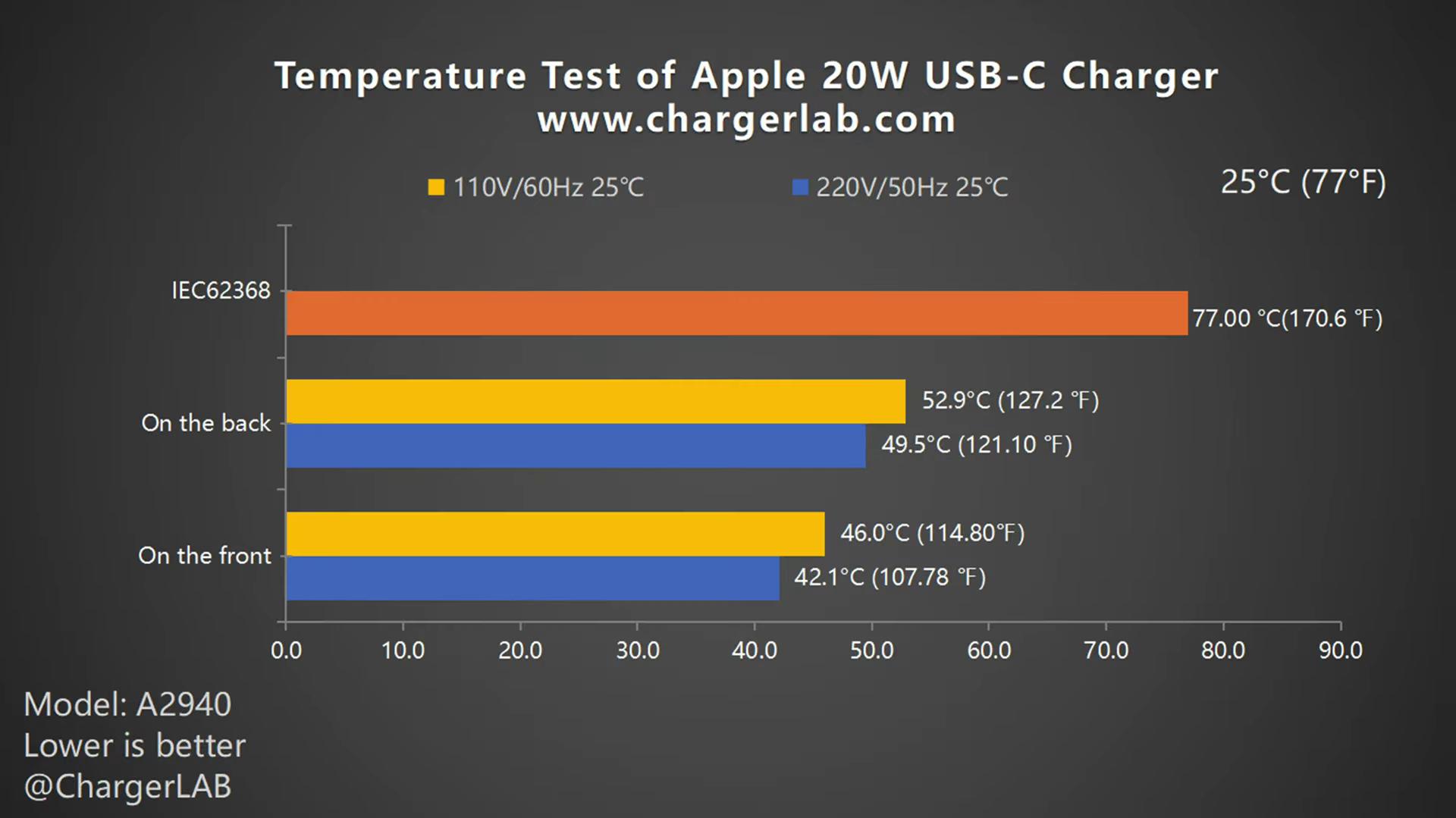
It's slightly higher than your body temperature and complies with the IEC 62368 standard. You will feel warm, but not hot.
Summary of ChargerLAB
Well, that’s all our tests for the Apple 20W charger. As the most common 20W charger on the market, even if the internal Power IC is changed, its performance does not change a lot.
It has good compatibility and ultra-low standby power consumption. The conversion efficiency and ripple performance are also outstanding. If you don't care about size and price, it's the one you can't go wrong with.
Related Articles:
1. Updated Power IC | Teardown of New Apple 20W Charger
2. Teardown of Apple 20W Power Adapter (For iPhone 14 Series)
3. Review of New Apple 20W Charger for iPhone 15 Series (Video)

